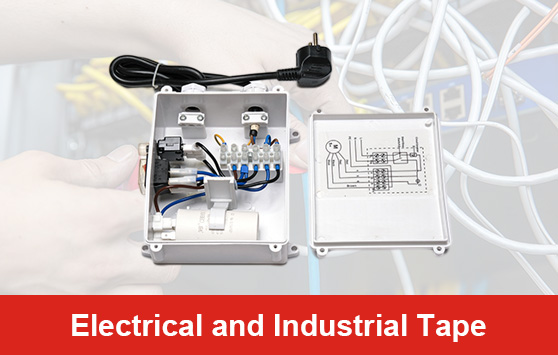Self-Amalgamating Tape and Temperature Resistance
Self-amalgamating tape, also known as self-fusing tape or silicone tape, is a versatile material widely used in electrical, plumbing, and automotive applications. One of its most significant characteristics is its ability to form a strong, permanent bond without the need for adhesives, making it a popular choice for various repairs and insulation tasks. However, understanding its temperature resistance is crucial for optimal performance and durability in different environments.
What is Self-Amalgamating Tape?
Self-amalgamating tape is typically made from silicone or rubber compounds that have the ability to fuse with themselves when wrapped around a surface. This property allows the tape to create a watertight, airtight seal that can withstand extreme conditions. Unlike traditional adhesive tapes, this type of tape does not leave a sticky residue and is easy to apply, as it requires no special tools or techniques. Simply stretch and wrap it around the target area, and the tape will bond to itself, creating a secure seal.
Temperature Range and Applications
The temperature resistance of self-amalgamating tape varies depending on its composition but generally spans from -60°C to 260°C (-76°F to 500°F). This wide temperature range makes it suitable for numerous applications. In electrical work, for example, this tape is used to insulate and protect wires and connectors from heat and moisture. In plumbing, it can be used to seal leaks in pipes that may experience high temperatures.
self amalgamating tape temperature

For automotive applications, self-amalgamating tape is invaluable for managing exposed wiring and protecting sensitive components from heat generated by the engine. Additionally, its resistance to ultraviolet (UV) light, ozone, and weathering makes it an ideal choice for outdoor applications where exposure to the elements is a concern.
Considerations for Use
While self-amalgamating tape is highly effective, it is essential to consider its limitations concerning temperature and physical stress. Although it can handle a broad range of temperatures, prolonged exposure to extreme heat may eventually degrade the tape's performance. Similarly, while it is remarkably resilient, it may not withstand continuous mechanical stress or pressure without eventual failure.
When using self-amalgamating tape, proper surface preparation is critical for ensuring a robust bond. Surfaces should be clean, dry, and free from contaminants, allowing the tape to adhere effectively to the material underneath. Users should also ensure they apply sufficient tension while wrapping the tape to maximize its sealing capability.
Conclusion
In conclusion, self-amalgamating tape is a remarkable material with significant utility across various fields. Its temperature resistance makes it especially valuable for high-heat environments and applications. By understanding its characteristics and limitations, users can make informed decisions about when and how to utilize this innovative tape effectively, ensuring long-lasting and reliable performance in their projects.
-
XIANGFAN Rubber Tape-Ultimate Solutions for All Your Insulation NeedsNewsJun.24,2025
-
XIANGFAN Rubber Tape-Protection for Industrial and Residential ApplicationsNewsJun.24,2025
-
XIANGFAN Rubber Tape: Superior Safety and Sealing for Demanding EnvironmentsNewsJun.24,2025
-
XIANGFAN Rubber Tape: Reliable Solutions for Every Electrical ChallengeNewsJun.24,2025
-
XIANGFAN Electrical & Industrial Tape: Powering Reliability Across IndustriesNewsJun.24,2025
-
XIANGFAN Electrical & Industrial Tape: Excellence in Every ApplicationNewsJun.24,2025
